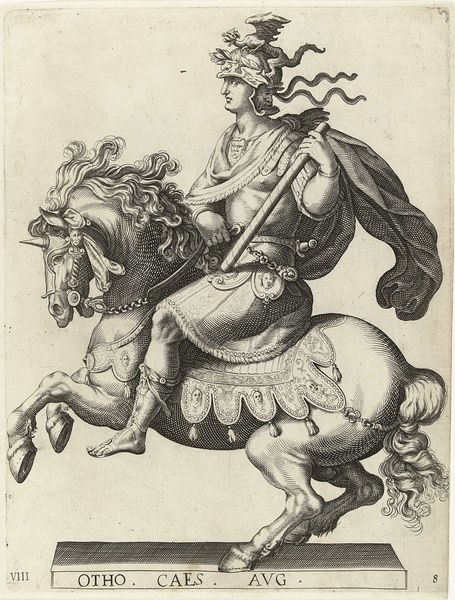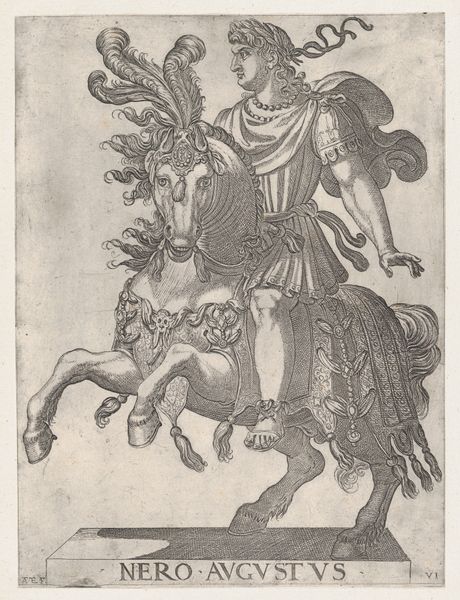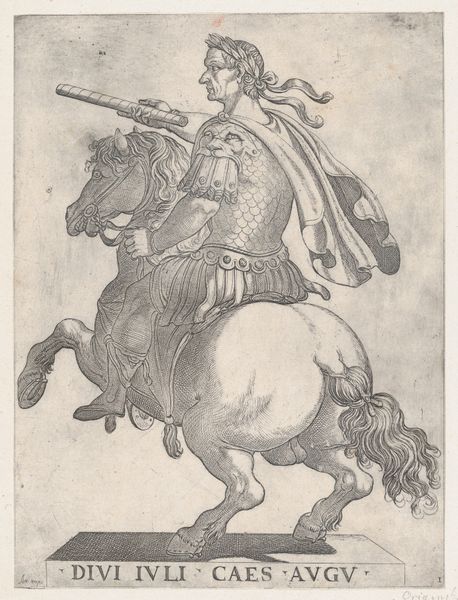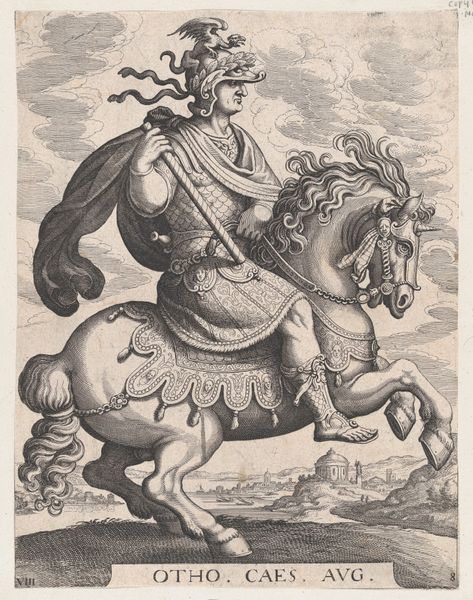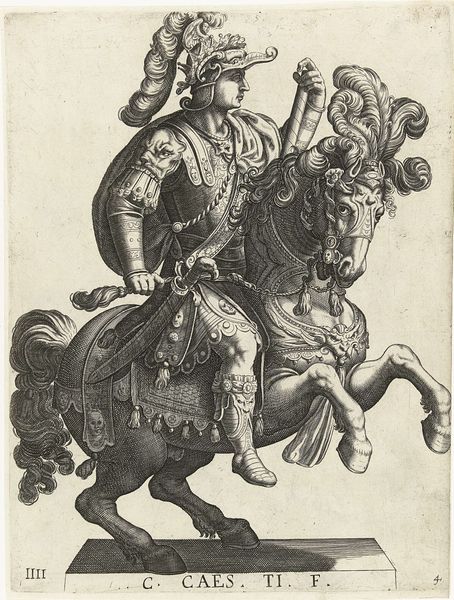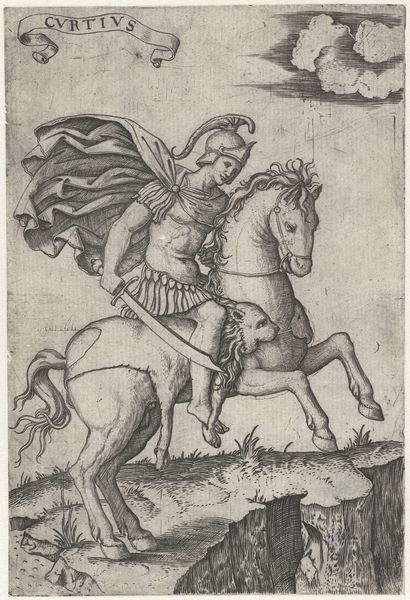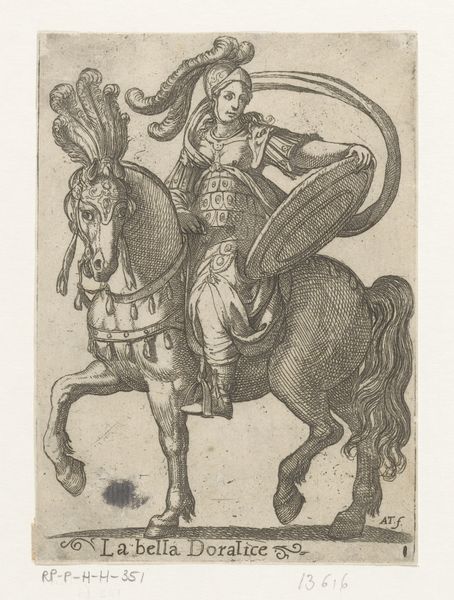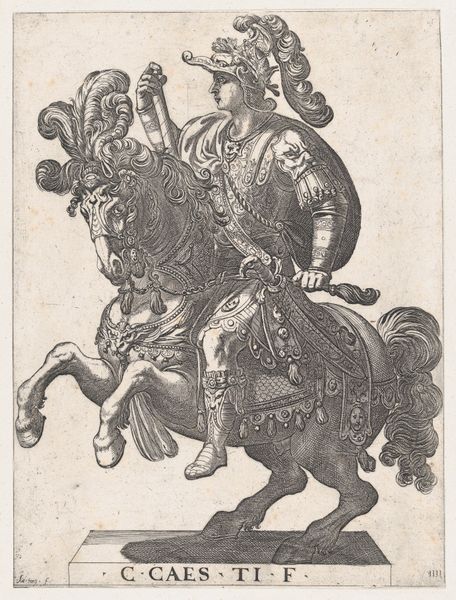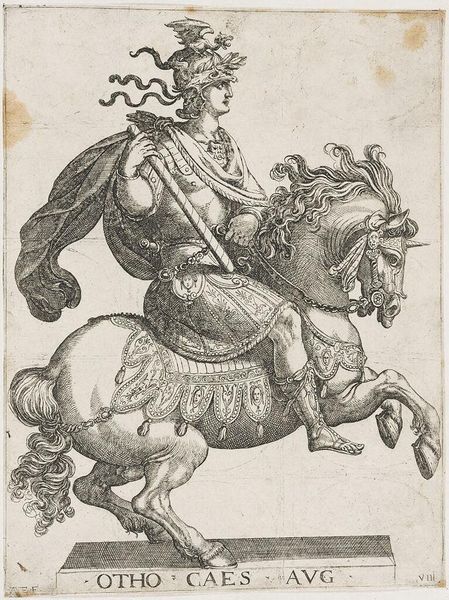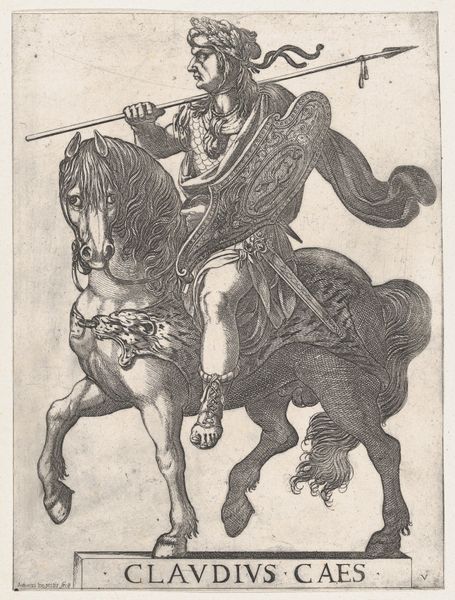
Plate 8: Emperor Otho on Horseback, from 'The First Twelve Roman Caesars' 1596
0:00
0:00
drawing, print, engraving
#
drawing
# print
#
mannerism
#
figuration
#
horse
#
line
#
history-painting
#
academic-art
#
italian-renaissance
#
engraving
Dimensions: Sheet: 11 13/16 × 8 7/8 in. (30 × 22.5 cm)
Copyright: Public Domain
Antonio Tempesta made this print of Emperor Otho on horseback around the turn of the 17th century, using etching, a printmaking process that relies on acid to incise lines into a metal plate. Look closely, and you can see how the etched lines define the form, creating areas of shadow and light that give volume to the figure of Otho and his mount. The process demands careful control: the artist would have applied a waxy ground to the plate, then scratched through it to expose the metal, before submerging the whole thing in acid. The longer the plate remained in the acid bath, the deeper the lines would be etched, and the darker they would appear when printed. Prints like this one were essentially commercial products, meant for circulation among collectors. It's fascinating to consider the amount of labor involved in producing such a finely detailed image, and how that labor was ultimately translated into a commodity for consumption. Recognizing the craft and skill behind it asks us to expand our understanding of art history beyond the traditional categories of painting and sculpture.
Comments
No comments
Be the first to comment and join the conversation on the ultimate creative platform.
